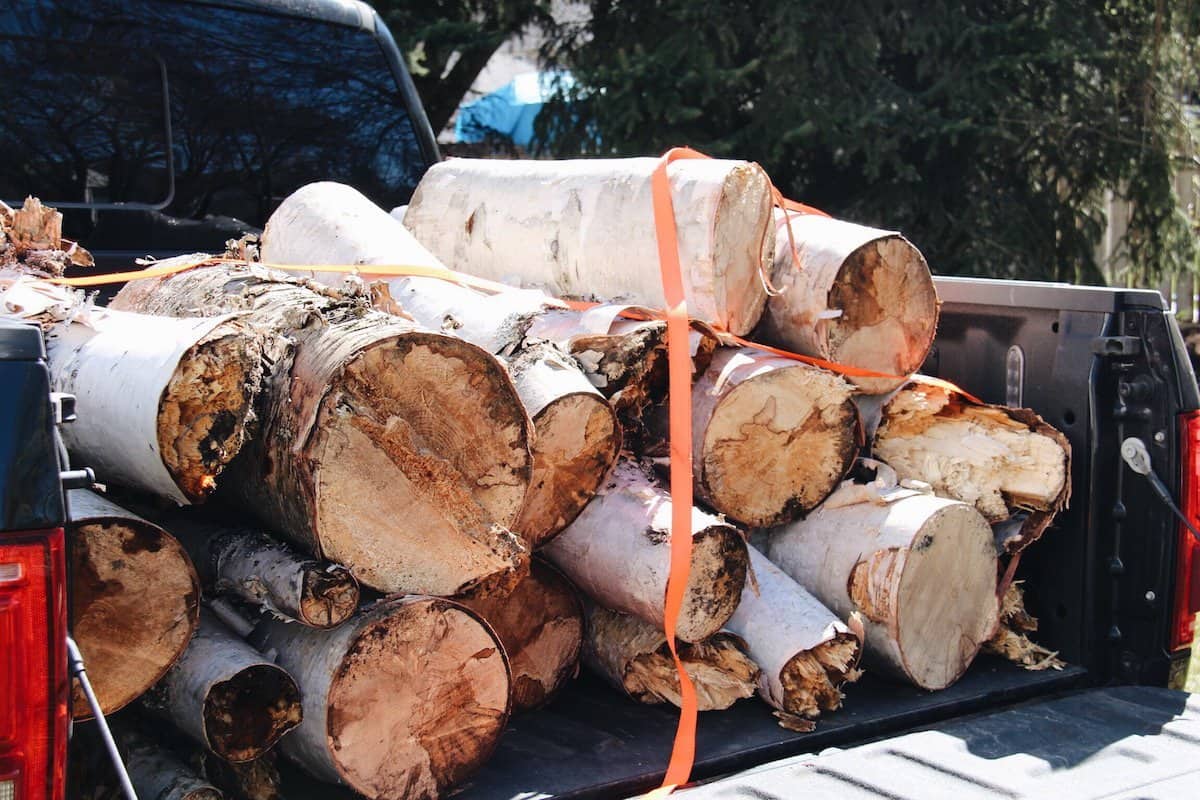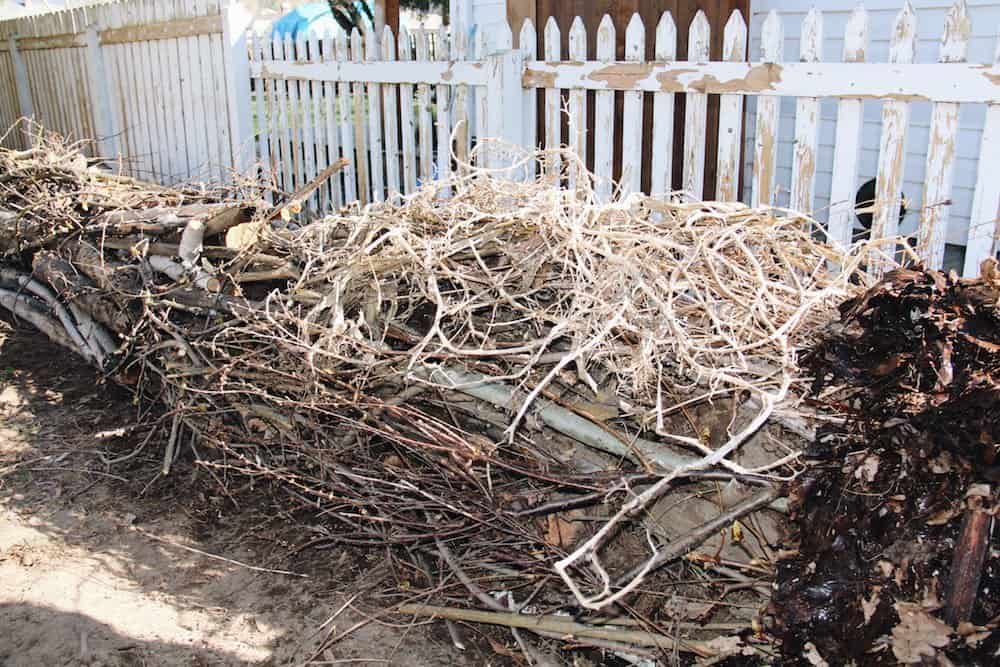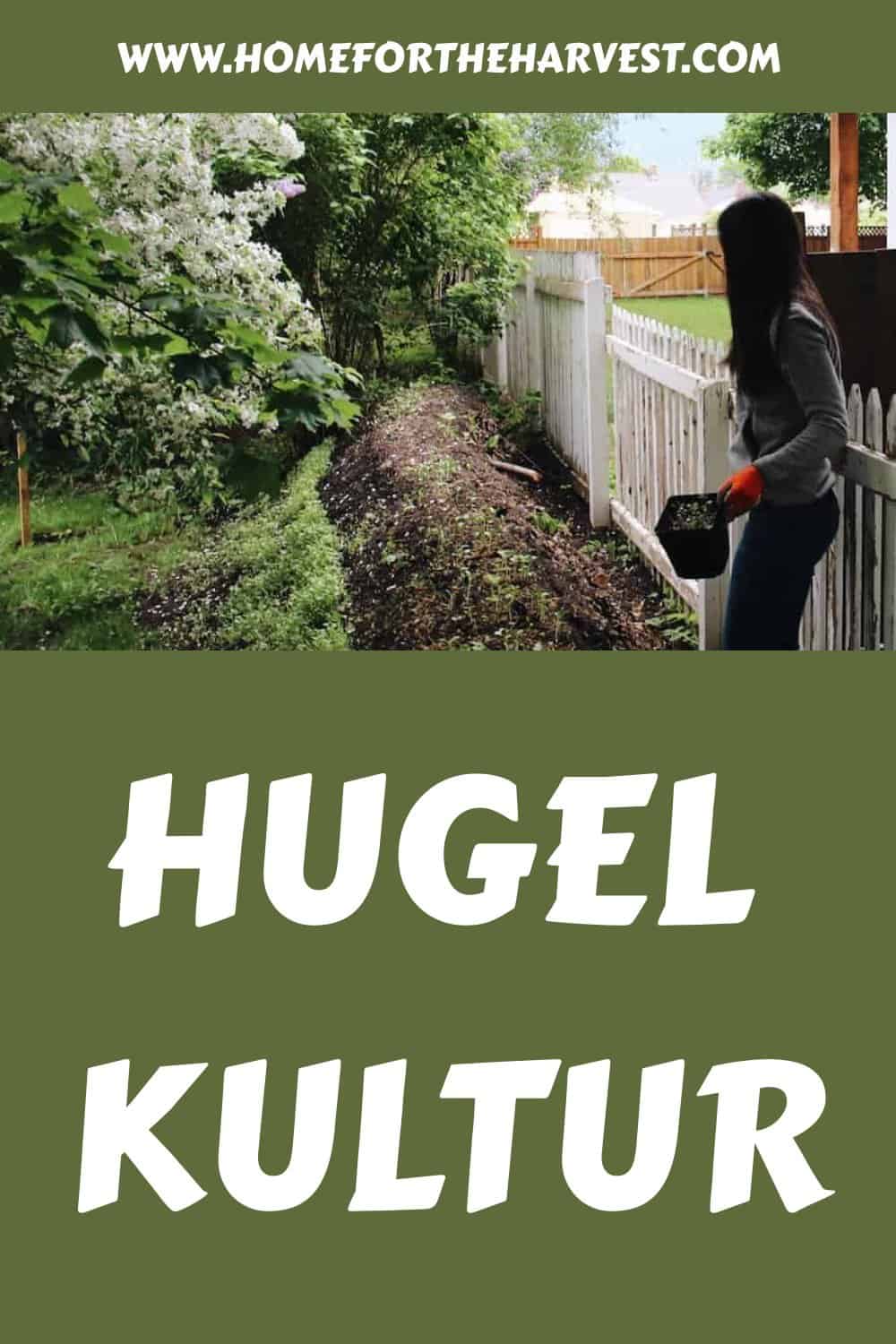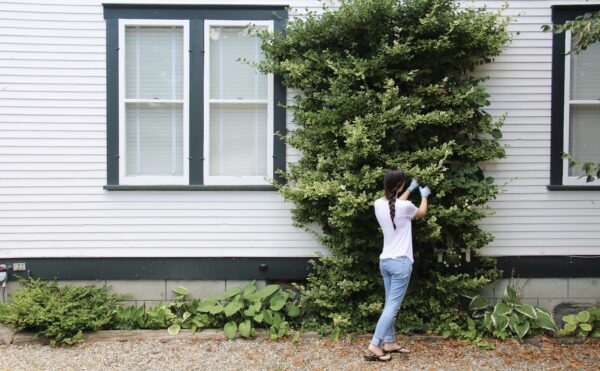Hugelkultur is a very efficient and productive composting method that can create an eco-friendly raised garden bed.
Hugelkultur is a form of in-place composting in which logs from fallen trees are buried at the bottom of a garden bed. These recycled bits of wood from around the yard and compost into wonderful fertile soil (without all the turning and spreading of traditional composting). Productive plants can then be grown in the hugelkultur bed, where they can take advantage of the nutrients released by the composting process.
Compost is one of those wonderful things that can turn waste into a useful product. Hugelkultur raised garden beds are a perfect way to simplify an already useful process. Read on to learn all about hugelkultur!
What is hugelkultur?
Hugelkultur combines in-place composting with raised garden beds. Hugelkultur raised beds, or “hugelbeds”, are mounds constructed out of woody debris, nitrogen-rich material, and soil. The bed composts in place, creating a rich growing environment for your garden. Hugelkultur is most commonly used for composting bulk yard waste items like logs, sticks, and leaves, while indoor food scraps are best composted separately.
The wood becomes spongy as it composts, soaking up lots of water from the surrounding soil. After a year or two, the hugelbed barely needs to be watered at all. This is because the bed is mimicking a natural woodland. Wild forests do not require irrigation because the forest floor can retain so much moisture. Fortunately, we can take advantage of this principle in the city with hugelkultur.

Hugelkultur: Composting waste and fertilizing plants in one garden bed
Hugelkultur is a unique method of raised bed gardening where wood is used as the base. The key difference between traditional raised beds and hugelkultur beds is the use of rotting wood and other organic materials, such as grass clippings and wood chips, as the foundation for the raised bed.
The concept of hugelkultur is rooted in the idea that as wood and other organic materials decompose, they release nutrients and moisture into the soil, creating a rich and fertile environment for plants to thrive in. This eliminates the need for frequent watering and fertilizing, as hugelkultur beds are self-sustaining in terms of nutrients.
One of the benefits of hugelkultur is that it can be used to create raised garden beds on slightly sloped or uneven terrain. Additionally, the raised beds allow for better drainage than would be possible on flat land and can even help to warm up the mound of soil earlier in the growing season.
Another advantage of hugelkultur is that it is a great way to recycle yard waste, such as grass clippings and wood chips, by using them to create a raised bed. This not only reduces waste but also helps to build healthy soil. And you can skip the work of traditional composting!
Lastly, hugelkultur raised beds are among the first to thaw in the spring. This is partly because they are above ground level but also because the composting wood creates heat. This extra heat at the beginning of the season can add several weeks to the start of the growing season.

Reasons why hugelkultur garden beds are awesome
Here are some major benefits of hugelkultur raised beds:
- Recycle wood, clippings, and leaves from around the yard;
- Retain moisture, decrease irrigation requirements;
- Build healthy garden soil;
- Deflect wind;
- Fertilize themselves;
- Create a raised, warm environment for early-season crops.
It’s very cool to mix grass clippings with some rotting wood, wood chips, and other woody debris and create these hill-culture garden beds for spring planting.
Given these benefits, hugelkultur is particularly well-suited to the urban environment. Many urban lots have poor, compacted soil. Building a hugelkultur bed overtop of the poor soil makes it possible for plants to thrive in healthy soil despite the poor existing soil at the site. Let’s get into what you’ll need and how to build a hugelkultur garden bed.

Supplies: How to build a hugelkultur bed
- Wood logs, sticks, leaves, and other organic yard waste
- Birch is best. Alders, apples, aspen, cottonwood, maple, oak, and poplar are also good. Hardwoods are prime hugelkultur candidates.
- In general, deciduous wood is generally better than conifer (evergreen) wood for hugelbeds.
- Stay away from cedar and black locust (slow to decompose), and black walnut (produces a toxin which prevents the growth of other plants).
- Soil (mix of minerals and hopefully some organic humus)
- Nitrogen-rich material
- Composted manure
- Fish emulsion
- Kitchen vegetable scraps
- Pruners, loppers, pruning saw
- Shovels
- Garden Hose + Water
- Seeds (consider squash, sunflowers, kale, lettuce, peas, and any other easy annual crops that grow easily from seed).

Steps: How to build a hugelkultur garden bed
- Measure out the area for the hugelbed. The hugelkultur will likely be approximately 3-5 feet wide and can be as long as you like.
- Once you have rough measurements, calculate how much wood and soil will be required. Using equal parts of woody material and soil is generally the easiest. For a small hugelkultur bed, each 10′ in length will require 1 yard of wood and 1 yard of soil (1 yard is approximately 1 full pick-up truck). For a larger hugelkultur bed, use the same amount of wood and soil over a 5′ length.
- Measure out your nitrogen-rich material. For each cubic yard of wood used, add one cubic foot of composted manure (or other nitrogen-rich material).
- Dig a trench within the perimeter of the hugelbed. The trench can be anywhere from 6 inches to 2 feet deep. The deeper the trench, the more opportunity for water absorption.
- Place the largest logs on the bottom of the ditch. These logs will act as a wicking bed to draw up groundwater.
- Place some soil and manure on top of the logs. Push the material down into any open spaces between the logs to fill any air voids.
- Water the logs/soil with the garden hose.
- Add another layer of smaller logs and branches, filling all the spaces with soil, manure, and/or leaves.
- Continue to water the hugelbed during construction.
- Keep adding layers of logs. Fill the spaces between logs with soil, manure, and leaves. And keep watering!
- Once all of the woody material has been placed, cover the hugelkultur bed with soil and water the finished hugelbed.
- Seed the bed heavily with seeds of your choosing. Common seed choices include trailer plants such as squash and root crops near the bottom of the bed. The middle third is often planted with beans, peas, flowers, kale, and lettuce. The top of the bed is generally planted with drought-tolerant flowers, sunflowers, tomatoes, peppers, and corn. Use several times more seed than you expect (this will help to drown out weeds). Give the bed a final watering.

After installing your hugelkultur bed
Upgrades to a hugelkultur bed include adding mulch and creating a stone border. It can also be planted with perennial plants once it’s had a season or two to settle.
The hugelbed is a great way to build soil. The pile will settle by about 6” in the first year, and continue to settle (although not nearly as much) in the years to follow. After several years of settlement, transition the bed to perennial crops.
For detailed reading about hugelkultur, check out Sepp Holzer’s Permaculture Book.
FAQs about hugelkultur
What wood is best for hugelkultur?
The best wood for hugelkultur is wood that is readily available and is not treated with chemicals. Hardwoods, such as oak and beech, are ideal because they decompose slowly and provide long-term fertility to the soil. Softwoods, such as pine and spruce, can also be used, but they decompose more quickly. It’s important to note that green wood will decompose faster and rot quicker than dry wood. Avoid super-slow rotting woods like cedar if possible.
Can you use grass clippings in hugelkultur?
Yes, grass clippings can be used in hugelkultur as a carbon-rich material. When added to a hugelkultur bed, grass clippings can help to retain moisture and provide nutrients to the soil as they decompose.
However, it’s important to use grass clippings that are free of pesticides and herbicides, as these chemicals can be harmful to plants and animals. Additionally, it’s best to mix the grass clippings with other materials, such as leaves or wood chips, to ensure adequate aeration and prevent the clippings from becoming compacted and forming a mat that can inhibit the decomposition process.
How long do hugelkultur beds last?
Hugelkultur beds can last for many years, potentially even decades, depending on the materials used and the climate. As the wood in the bed decomposes, it releases nutrients and minerals into the soil, which plants can take up. The decomposition process also helps to improve the structure and fertility of the soil over time.
The decomposition rate will depend on the type of wood used and the climate conditions. Hardwoods can take several decades to decompose, while softwoods may decompose more quickly. It’s also important to note that a hugelkultur bed may need to be replenished with fresh wood over time to maintain its fertility.
References
- Oklahoma State University: Sustainable Landscapes – Creating a Hügelkultur for Gardening with Stormwater Management Benefits
- Washington State University: Hugelkulture
- University of Nebraska: LiveGreen – Hugelkultur
- Cornell University: Healthy Soil for Urban Farm Production: Building from Scratch









